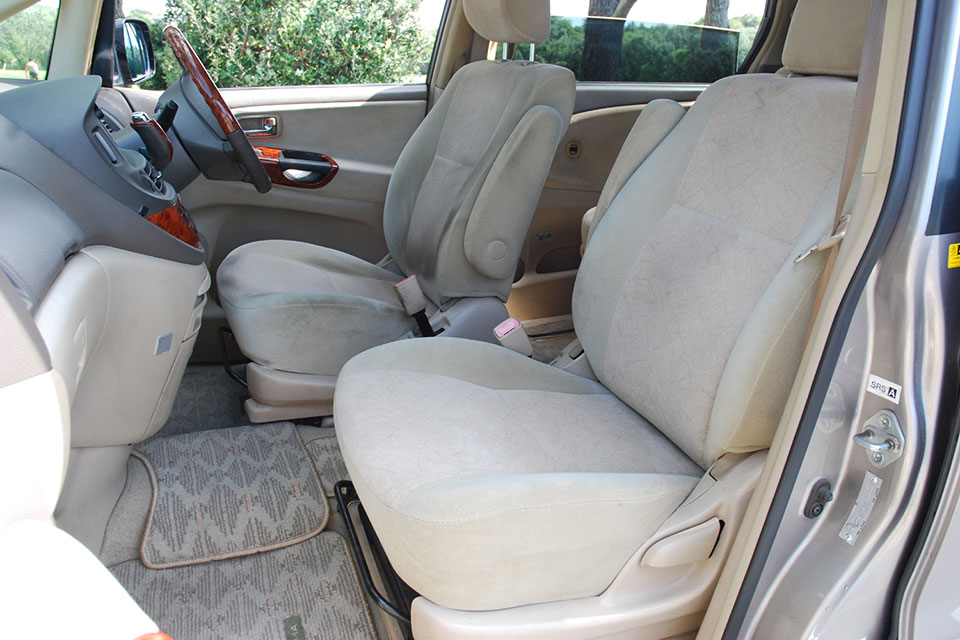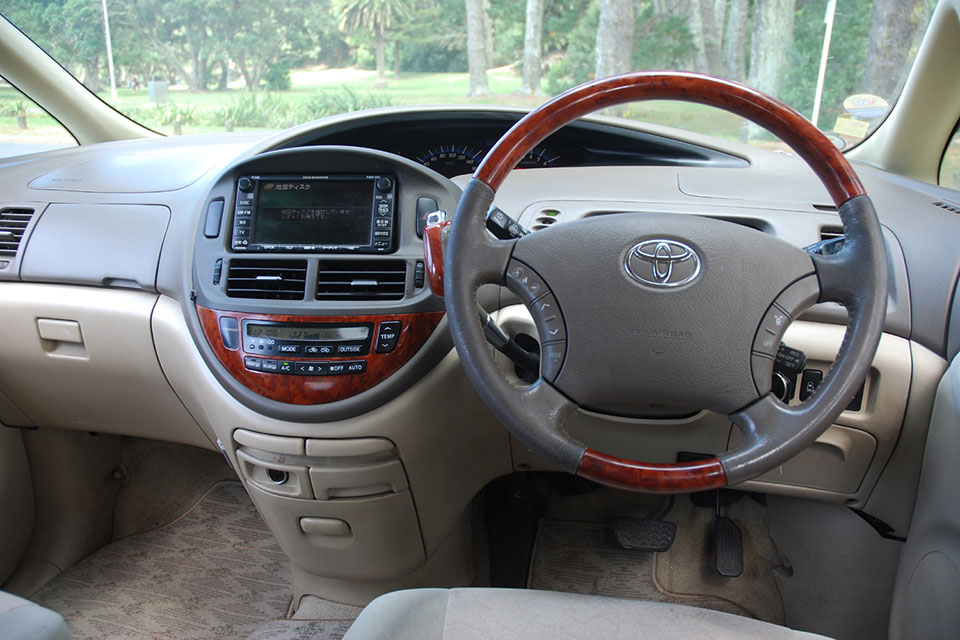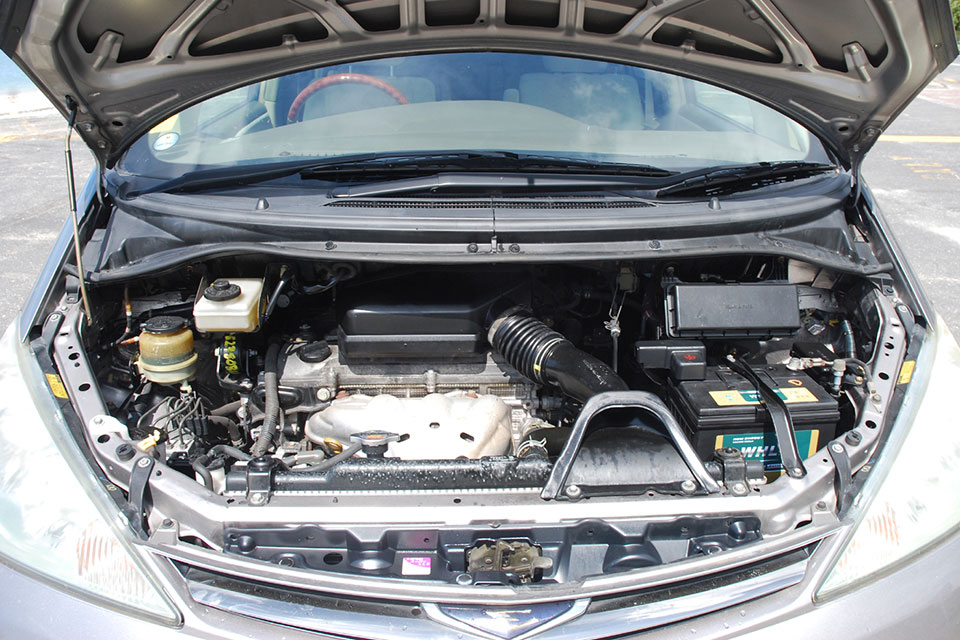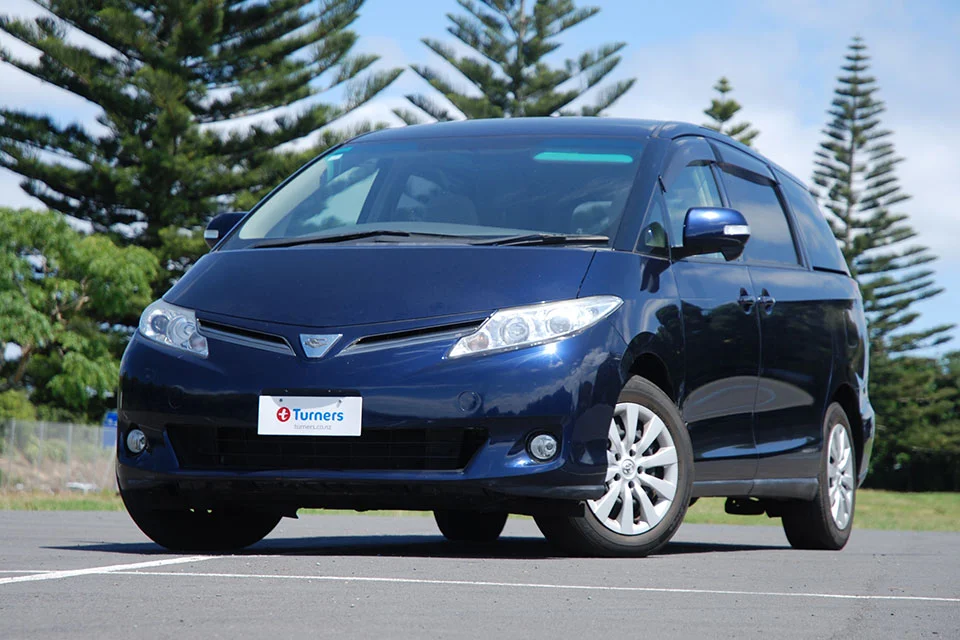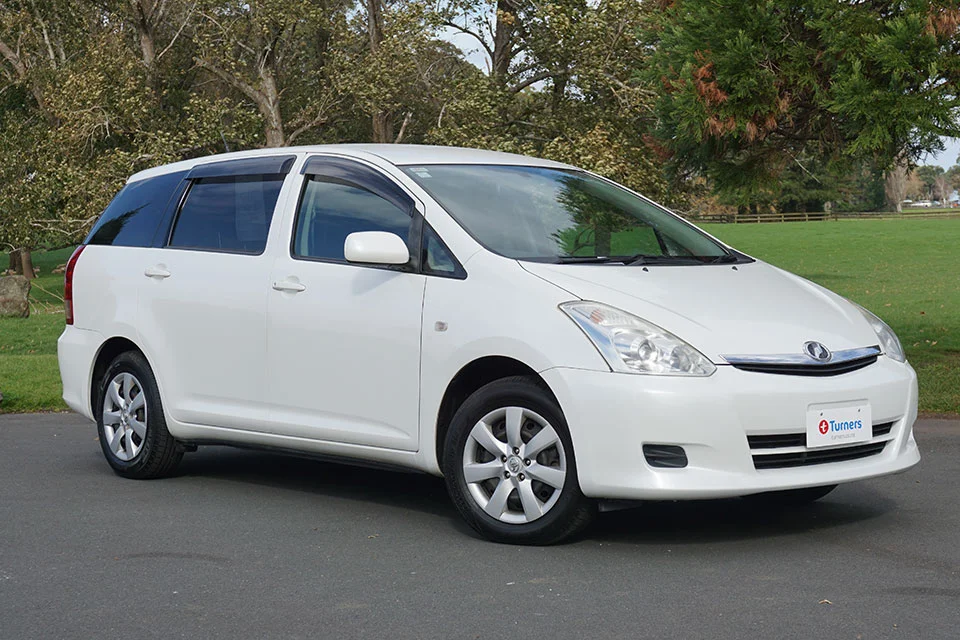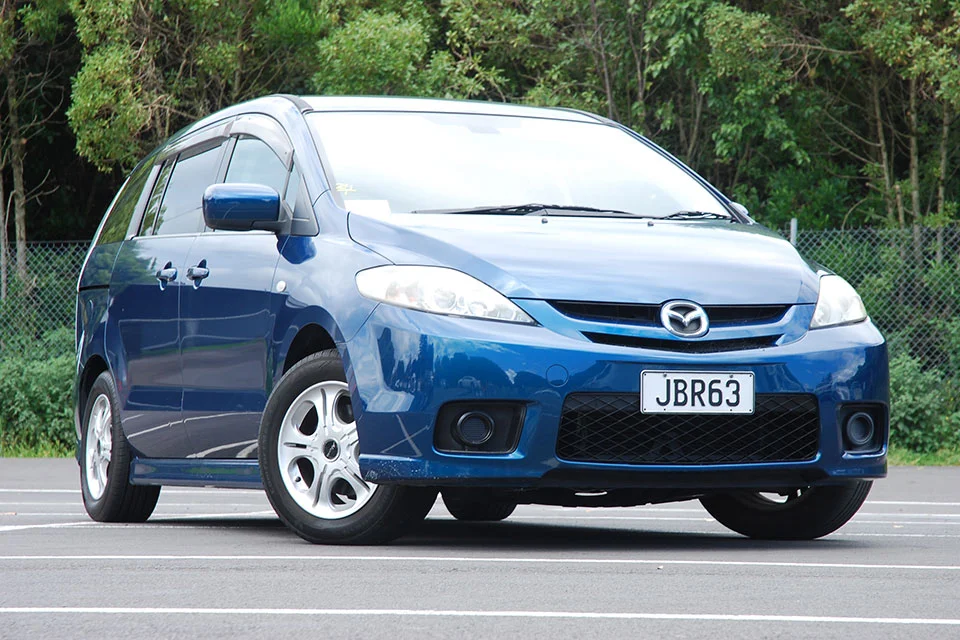Toyota Estima 2000-2006 used car review
The Toyota Estima is a spacious family people-mover.

The Toyota Estima is a spacious family people-mover. An SUV may carry seven people, but the Estima will let them take their luggage as well.
Multi-purpose vehicles — MPVs or people movers, as they are more commonly known — offer maximum space for families but aren’t especially sexy, which is why sport utility vehicles (SUVs) are far more popular. An MPV offers big advantages as it handles better than an SUV, is easy to clamber into, and is far cheaper to buy used.
The most popular large MPV is the Toyota Estima, known as the Previa when sold new in NZ. It is available with seven or eight seats and in specifications ranging from basic to luxurious.
Inside and out
The light tan trim in our 2004 Estima, the mid-range ‘Aeras’ version, makes this MPV feel even more spacious than it is, and it already has plenty of cabin space. The fake wood trim on the steering wheel and curvaceous dashboard also help, though sadly the light colour doesn’t hide wear and grime as can be seen in our images.
A black interior might make the car seem less spacious, but it will wear better. The Estima’s dashboard features a series of ovals set within each other. The instrument panel sits in the top oval above the centre console rather than directly in front of the driver. The gear lever sticks out of the dashboard to the left of the steering wheel, which takes some getting used to.
There’s a walkway through to the centre row of ‘captain’s chairs’ seats—two separate chairs on rails that allow them to move back and forth. They each have an armrest, and there’s a small folding table between them. The third row has seat belts for three—you will struggle to get three adults back there, though legroom is plentiful.
This Toyota is not short of conveniences. The large touchscreen audio system will require a band expander for New Zealand frequencies. The climate-control air conditioning system has an extra controller for the rear passengers and separate vents for the second and third rows. The rear doors that can be electronically controlled from the driver seat will be especially handy for the school run.
Boot space with the rear seats up is 515 litres or five medium-sized suitcases. If you fold the seats down there is 2,917 litres available, which means four people can travel in comfort with a huge amount of luggage and leisure equipment.
The Estima has a very sharp, angular nose, with angular headlights – updated as part of a 2003 facelift. The rear is more conventional, with a large hatchback that is easy to open.
On the road
For such a large, versatile vehicle, the Estima drives surprisingly well. The steering is very light but still gives you some feel as to what the wheels are doing. The ride is soft and comfortable, but the low ride height means it leans less going around corners than you would expect for a vehicle of this size.
The 2.4-litre engine produces 116kW and is surprisingly zippy when lightly loaded down. We expect it could prove sluggish if you load up with seven passengers and luggage. If you are likely to do that on a regular basis, we recommend spending more for the 3.0-litre six-cylinder version. There is also a hybrid version for those looking for maximum fuel economy, or for more power than the entry-level engine.
The interesting interior design takes some getting used to when driving, though the dash cluster’s position (high and to the middle) means you'll spend less time with your eyes away from the windscreen. The dash-mounted transmission shifter is has a different grip to a normal shifter and can be a little clunky to use.
The Estima is large, so urban manoeuvring and parking are not that easy—although the 11.6-metre turning circle is acceptable for its size. Our car had a vision system to help: two cameras looking in each direction at the front, and a reversing camera. You can activate the front cameras with a button on the steering wheel to see around corners, or where the front of the car is when parking.
The 2000–2006 Toyota Estima can tow a 600kg unbraked trailer, or 1,600kg braked, enough for a small boat or sizeable trailer for the family camping holiday. Be aware that with a full load and trailer on the back the Estima will be slow, and burn a lot of fuel.
Reliability
Toyota’s 2.4-litre four-cylinder engine is considered extremely durable, provided it is regularly serviced. It has a cam chain which, unlike a cambelt, is unlikely to ever need replacing.
There is one weakness under the bonnet. The plastic ‘top tank’ on the radiator degrades over time, developing cracks and leaks, which can lead to engine overheating.
Early signs are a brownish-gold discolouration of the plastic, especially around the radiator cap or hose outlet joints. Luckily, replacement tanks are cheap and readily available, with replacement including labour likely to cost less than $300.
Rear suspension trailing arm bushes, which reduce noise from the rear suspension, are also subject to issues from wear on higher-mileage Estimas. The parts themselves are cheap, but replacement takes several hours, so expect a bill above $500.
When buying, check the doors open all the way to the end of their track, and close correctly. Ensure the tracks are lubricated, and clear of any blockages.
When buying an Estima, check to make sure the air conditioning system is able to blow cold air out of both the front and rear vents. The system is complicated and very expensive to fix if faulty.
Safety
The 2000–2006 Estima carries a four-star Used Car Safety Rating, the same as the Honda Odyssey and Kia Carnival launched slightly before it. Another alternative is the newer-generation Honda Odyssey sold from 2004, which carries a five-star rating.
Our review Estima features two airbags for the driver and passenger and anti-lock braking.
If you need to carry more than two child seats, you may need to look elsewhere, as only the middle row seats have ISOFIX mounting points and child seat tether points.
The Estima has a high rear window line, creating a dangerous blind spot behind it where children can easily be missed. If the vehicle you are looking at does not have a reversing camera, or the multi-camera system like on our review vehicle, we would recommend fitting one.
Systems are available on Trade Me from $50, or you can have one professionally installed from $200.
Cost of ownership
A 2.4-litre Estima requires servicing every 12 months or 15,000km, whichever comes first. A Toyota dealer quoted us $260 for the standard service, while a major one is needed at 90,000km, which will cost $600.
RightCar estimates that over 14,000km of driving a year, an Estima will cost $2,800 annually to fuel. This is a penalty of more than $1,000 a year over the next-generation Estima with its more efficient CVT automatic transmission. The 60-litre petrol tank costs $120 to fill at $2 a litre, and this could carry you as far as 550km before the fuel light comes on.
The Estima is in the second cheapest band for ACC levies and will cost $112.16 a year to licence.
Trade Me Insurance estimates insurance for the car will cost $59.93* per month. That’s $9 more than the Mazda MPV and $11 more than a Honda Odyssey.
Buyers' guide
Estimas like our review vehicle are available on Trade Me for as little as $3,000, with prices going as far as $15,000 for late model, low-mileage ones.
There are very few low-mileage Estimas available, but with such a reliable engine and transmission, don’t let this put you off. Look for cars that have been well serviced and are showing less interior wear and tear.
Variants
- X – Standard specification
- Aeras – A premium specification featuring climate control air conditioning and electric doors
- G – The top specification with leather upholstery
There are many ‘special’ versions of the Estima with additional specifications added. All models are available with front or all-wheel drive and the choice of the three different engines.
Timeline
- 2000 - Production begins in Japan
- 2003 - A minor facelift becomes available featuring new headlights and a new rear spoiler
- 2006 - Replaced by all new model
Details
2004 Toyota Estima Aeras
$7,000 to $14,000 for models which have travelled 70,000 to 120,000km
2.4-litre four-cylinder, 116kW/220Nm (claimed)
Four-speed automatic, front-wheel drive
Four-star Used Car Safety Rating
15,000km or 12 months
Space saver
10-litres per 100km (claimed)
Regular
4750mm
1750mm
1770mm
600kg (unbraked), 1600kg (braked)
11.6m
This review covers the Toyota Estima for model years 2000, 2001, 2002, 2003, 2004, 2005 and 2006.
Review vehicle supplied by 2CheapCars, Botany.
*Our insurance estimates are based on a 35-year-old male with no accidents in the last two years, garaging the car in Mission Bay, Auckland. The car is not used for business and will cover 10,000km to 20,000km a year. We estimate with no option add-ons and $500 excess. Customise your estimate at Trade Me Insurance.
Image gallery
Also consider
